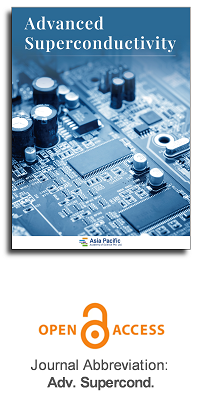
Asia Pacific Academy of Science Pte. Ltd. (APACSCI) specializes in international journal publishing. APACSCI adopts the open access publishing model and provides an important communication bridge for academic groups whose interest fields include engineering, technology, medicine, computer, mathematics, agriculture and forestry, and environment.
The main advantages of superconducting wires and tapes is lossless flow of transport current, lossless storage of energy, and generation of high magnetic fields. These advantages can help solve the most critical problems that world faces. Currently, humanity's primary concern is energy security. Humanity for stable development needs cheap, stable, and non-polluting energy sources. A fusion reactor can meet such expectations because it will produce a large amount of stable energy without pollution of the natural environment. This reactor needs cheap superconducting coils and superconducting wires with high critical parameters. Various superconducting wires and tapes e.g. NbTi, Nb3Sn, MgB2, HTS, and iron-based superconductors are being considered and tested. It seems that in the future, MgB2 wires with isotopic boron (11B) may be necessary for fusion reactors because irradiation does not degrade the transport critical current density and has a short decay time of about 1 year [1]. Another crucial application of superconductivity could be the combination of renewable energy sources with superconducting magnetic energy storage. This opens up prospects for cheap and clean energy on a small scale (small family businesses).
Issue release: 30 June 2025
High-temperature superconducting (HTS) tapes are now commercially available for various magnet applications. Their higher tensile strength enhances strain tolerance, allowing for the winding of smaller diameter coils. The most crucial component in a double pancake winding of a coil is the fabrication of inter-double pancake joints with minimal electrical resistance. This is due to the structural design of REBCO (RE—rare earth) tape, which consists of very thin layers of materials prone to deterioration when exposed to temperatures exceeding the recommended value, optimal joint overlap length, and the selection of solder materials. In this study, we investigated the effects of tape overlap lengths, solder materials, and soldering temperatures on joint resistance. The lowest joint resistance recorded was 18 nΩ, achieved with an overlap length of 150 mm at 4.2 K in a self-field, as reported in this paper for a 3.5 T REBCO coil winding pack.

Prof. Liang Qiao, University of Electronic Science and Technology of China...


 Open Access
Open Access